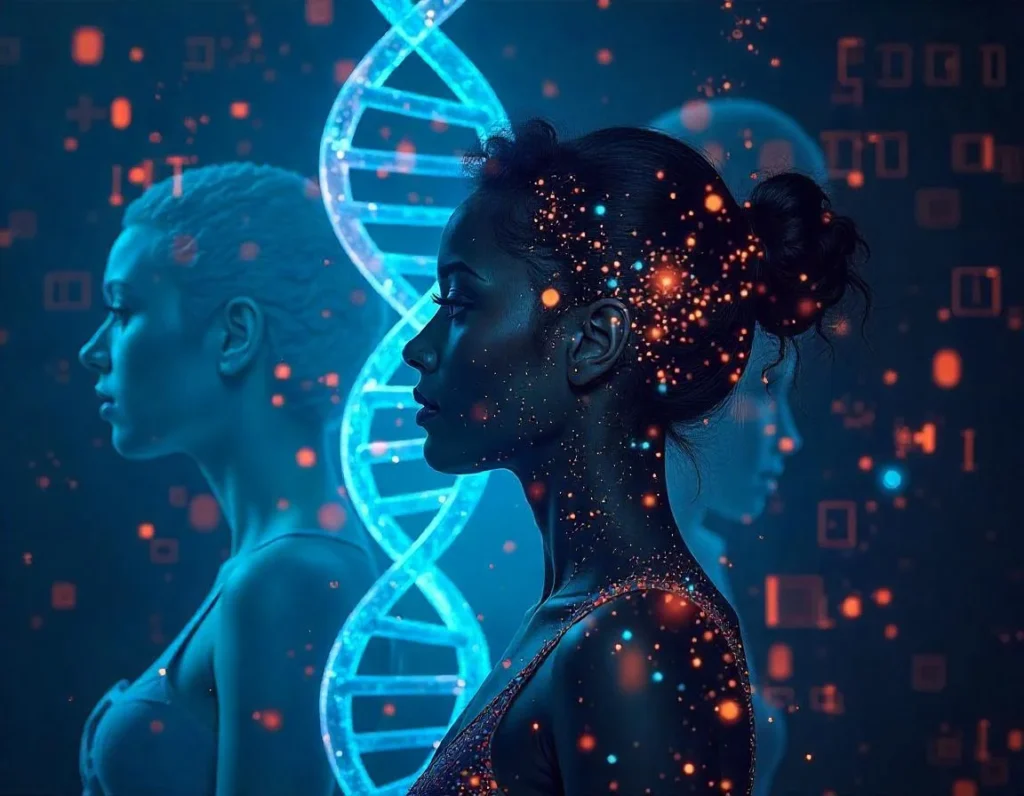For years, autism spectrum disorder has been the subject of many researches and debates. In fact, probably the million-dollar question on the mind of most people is whether autism is genetic. Well, in simple terms, yes, genetics does play a significant role in the development of autism. But that is not all there is to it. It’s more environmental factors intertwined with genes in an interaction that determines one’s likelihood of falling within the spectrum. In this comprehensive article, we’ll dive into the genetic basis of autism, explore how environmental factors interact with genetics, and discuss what this means for families and individuals affected by autism.
What Do Experts Say About Genetics and Autism?
According to many experts, genetics is the most important factor in the development of autism. Over 100 genes have been identified as associated with autism, and it’s known that both inherited and non-inherited mutations contribute. The genetic causes for autism can be inherited from families or be a result of spontaneous mutations at conception.
Key Insights Into Autism’s Genetic Influence
- Higher Incidence Among Siblings: Siblings of autistic individuals are more likely to be diagnosed with ASD, proving a genetic etiology.
- Twin Studies: Identical twins, who share the same genetic makeup, have a remarkably higher concordance rate for autism compared to fraternal twins.
- Family History: A family medical history of autism or other neurodevelopmental disorders raises the chances of autism in offspring.
How Do Genetic Mutations Contribute to Autism?
Genetic mutations can broadly be categorized into two types, namely inherited and non-inherited or spontaneous mutations. Understanding these categories helps us in answering the question, is autism genetic?
Inherited Mutations
Inherited mutations are passed down from parents to children. These mutations can involve:
- Single Gene Mutations: Changes in a single gene, such as those seen in fragile X syndrome, can lead to autism.
- Polygenic Risk Factors: Most cases of autism are polygenic, meaning multiple genes contribute to the risk.
- Epigenetic Changes: Factors that influence gene expression without altering the DNA sequence, such as parental age, can also play a role.
Non-Inherited Mutations
Spontaneous, or de novo, mutations occur either during the making of reproductive cells or during early embryonic development. None are in a parent’s genetic code but arise anew in the child.
The Role of Environmental Factors
Whereas genetics often play the leading role in causing autism, certain environmental factors sometimes act to make these genes expressive. Even with a genetic predisposition, external influences may increase or decrease the development of autism in that individual.
Environmental Triggers to Consider
- Prenatal Factors: Infections of mothers, toxic exposure, and nutritional deficiencies are the potential factors to affect the fetal brain development.
- Parental Age: Advanced age of the parents, particularly fathers, has been associated with a greater risk for autism.
- Complications During Birth: Oxygen deprivation or early births are potential factors that may further trigger neurodevelopmental challenges.
Gene-Environment Interaction
Gene-environment interactions can show how environmental factors could change genetic expression. For example, high levels of pollution may trigger a genetic pathway that predisposes an individual to autism.
Why Is Autism More Common in Some Families?
So, is autism genetic, or is it just a coincidence when there are clusters in the family? The answer actually lies in both shared genes and the shared environment.
Autism and Heritability
The estimates of the heritability range of autism are as low as 50% and as high as 90%, by the different studies. This wide range reflects the complexity of autism and the difficulty in isolating genetic from environmental factors.
Shared Environmental Factors
Families also share most environmental exposures, from dietary habits to living conditions, which will further contribute to the risk of autism. However, these factors are secondary to genetic predisposition in most cases.
Breakthroughs in Genetic Research on Autism
Genetics has been working very much on the research that tends to unlock the mystery of autism. Because of advances in technology, like whole-genome sequencing, scientists were able to identify certain genes and pathways in the case of autism.
Key Findings from Recent Studies
- Synaptic Function Genes: Various genes with synaptic function, like SHANK3 and NRXN1, were strongly implicated in autism.
- Chromosomal Abnormalities: Certain chromosomal deletions and duplications, such as those on chromosome 16p11.2, are associated with autism.
- Rare Genetic Syndromes: Rare genetic syndromes, which are the consequence of single-gene mutations, frequently include autism, for example, Rett syndrome and tuberous sclerosis.
Implications for Families
Understanding the genetic basis of autism provides valuable insight into families navigating an autism diagnosis. The implications of this in real life are:
Genetic Testing
- Who Should Consider Testing?Genetic testing should be considered in all families with a history of autism or developmental delays.
- Types of Tests: Testing for genetic abnormalities can be done through techniques such as chromosomal microarray analysis and whole-exome sequencing.
- Benefits: Early identification of genetic factors can guide intervention strategies and inform family planning decisions.
Support and Resources
- Educational Programs: Special learning plans can help meet certain needs of the individual with autism.
- Therapeutic Interventions: Early intervention programs in speech therapy and occupational therapy often work wonders.
- Community Support: Support groups and self-advocacy organizations provide both emotional and practical support.
Debunking Myths About Autism and Genetics
Many misconceptions about the genetic underpinning of autism prevail. Let’s take a look at some of them:
Myth 1: Autism Is Caused by Vaccines
Extensive research has disproven this statement. There is no scientific data concerning vaccines that could be associated with autism.
Myth 2: Genetic Predisposition Means Inevitability
Having one or more genetic predispositions does not mean a person will definitely have autism. Environmental aspects and early interventions may alter the course.
Myth 3: Autism Is a Single-Gene Disorder
Complex interactions among hundreds of genes and environmental influences underlie the causes of autism.

Conclusion: Is Autism Genetic?
To that, the answer is a resounding yes genetics plays a significant role in autism. However, it becomes unique because of the interaction between the genetic and environmental factors. The genetic basis of autism clears up its causes but also opens possibilities for individually designed interventions and supports. Knowledge, after all, is power be that for a parent, a caregiver, or a person on the spectrum. Let’s get informed and active, so together we can create a better world inclusive and supportive of all those with autism.

